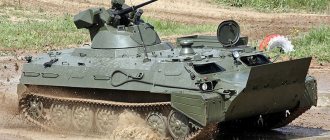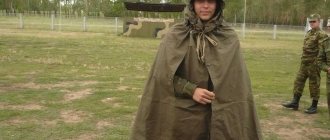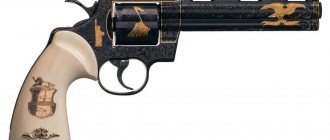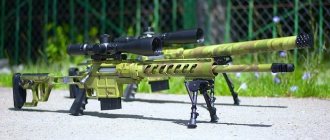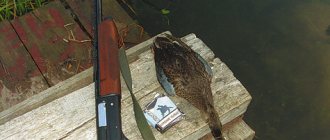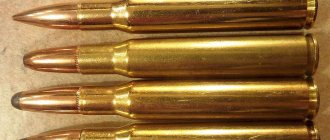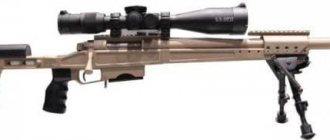Viking strike: Buk-M3 as a universal soldier of the new time
The Zvezda TV channel talks about what the latest modification of the Buk-M3 medium-range anti-aircraft system is capable of, elements of which were first shown to the general public at the Army-2018 forum.
Delivered to the troops as the Buk-M3 and offered for export under its own designation Viking, the 9K317M represents the pinnacle of development of the ground forces' family of medium-range air defense missile systems under the general name Buk. Over the almost half-century history of continuous development of this line, the maximum range for hitting targets has tripled, reaching seventy kilometers, and the height has doubled, to thirty-five thousand meters.
In addition to airplanes and helicopters for the initial appearance of the system, the Buk-M2 and Buk-M3 are also capable of effectively fighting with unmanned aerial vehicles, cruise missiles, guided bombs and other guided weapons. And the ability to fire at radio-contrast ground and surface targets makes them a truly universal means of protecting the borders of both our country and its allies.
Revolution in air defense
Development of the complex began in 1970, becoming a logical continuation of the 2K12 “Cube”. Having borrowed the key ideas of the "Cube" and a number of its elements, the "Buk" was distinguished by more advanced radar means through the use of "quasi-continuous signal" technologies. In the absence of artificial interference, the radars operated in pulsed radiation mode with range measurement, and when the enemy set them up, they switched to a “quasi-continuous signal”, which made it possible to track detected air targets and direct missiles at them even in conditions of intense radio countermeasures.
The next difference was that the launchers were equipped with their own illumination radar with the ability to view airspace in a narrow sector. While the Kuba battery was formed around a 1S91 self-propelled reconnaissance and guidance installation with two radars, in the case of the 3K37 Buk it included a pair of firing installations with its own radars and one launch-loader without a radar. By reducing the number of vehicles from five to three, the battery could now fire simultaneously at not one, but two targets, while maintaining the number of missiles ready to launch—twelve units.
The transition from the 3K37 (in service since 1979) to the Buk-M1 (1983) was accompanied by the introduction of a new detection and targeting radar at the division level. Instead of mechanical scanning, electronic beam scanning is used, which significantly expands the capabilities of the complex to detect and track unmanned aerial vehicles and cruise missiles over the entire range of speeds and altitudes of their flight.
"Buk-M1-2" and "Buk-M2"
With the collapse of the Soviet Union, the improvement of air defense systems slowed down, but, fortunately, did not stop. In 1998, the Buk-M1-2 was put into service, conceived as an affordable option for modernizing combat equipment, which can be carried out directly in the conditions of a military unit by the forces of factory industrial brigades. The modified 9A310M1-2 firing system is capable of firing the new 9M317 missile. Compared to the previous 9M38, the maximum firing range increased from 32 to 42-45 kilometers, the height of destruction of an aerodynamic target - from 18-20 to 25 thousand meters, and the probability of its destruction increased from 0.8-0.85 to 0.9- 0.95.
The next step was the launch into mass production of a firing installation with a radar equipped with a phased array antenna, which gave it the ability to fire not one, but four targets simultaneously. In addition, the complex could now operate against radio-contrast ground and surface targets at a distance of up to 25 kilometers.
The development of the product line of the Buk family of air defense systems in the new, 21st century was marked by the entry into service of the air defense of the Russian Ground Forces, first of the Buk-M2 air defense system (2008), and then of the Buk-M3 (2016). The main difference between them is the replacement of 3M317 missiles with 9M317M. Despite the slight difference in the designation (the suffix “M” was added), the latter represents a completely different product, with a reduction in weight by one and a half hundred kilograms, total length by more than thirty centimeters, and case diameter from 400 to 360 mm. Due to the lightness and compactness, the number of missiles placed on the SOU increased from four to six, and on the ROM - from eight to twelve.
A distinctive feature of the Buk air defense system is its versatility. It is capable of not only protecting army units on the march, in attack and defense, but also serving in protecting the country’s maritime borders. Therefore, it is not surprising that there is great interest in such a universal complex through military-technical cooperation. Buk-M2E was supplied to five countries around the world, including three far abroad: Algeria, Venezuela and Syria. In the future, it is planned to supply the Viking air defense system abroad, which is an export version of the Buk-M3.
For the first time, the elements of this complex were presented to the attention of visitors to the Army forum 2022: the 9M317M self-propelled firing system (SOU) and the 9S36M illumination and guidance radar (RPN). A feature of the latter is the use of a 21-meter-long telescopic mast to raise the antenna high above the ground, which significantly increases the capabilities of the air defense system to combat low-flying targets.
Viking takes the stage
The start of promotion abroad of the new Viking medium-range air defense system was announced in the spring of this year. Sergei Ladygin, Deputy General Director of Rosoboronexport PJSC, was the first to speak on this topic. According to him, the maximum firing range of the export version of the Buk-M3 air defense system is 65 kilometers, and the number of targets simultaneously fired by one self-propelled gun is six. Based on the composition of the anti-aircraft battery, it can be assumed that in a combat situation, each fire vehicle will, as a rule, be accompanied by a 9A316M launch-loading unit (PZU).
Built, like all other elements of the complex, on a tracked chassis, the ROM carries 12 transport and launch containers with 9M317M missiles stored in them. If necessary, she is capable of independently launching her entire arsenal. Since the 9A316M is not equipped with its own means of target illumination, missile guidance is carried out by means of the 9M317M combat vehicle accompanying it. A pair of SDA + ROM located in a position is capable of launching 18 missiles in a matter of seconds and simultaneously pointing them at targets due to the multi-channel equipment of the self-propelled firing system.
The most important quality of the Viking is the ability to exchange information via high-speed, secure communication channels with the Antey-2500 long-range air defense system (export version of the S-300V) and modern short-range systems (Tor-M2E, Sosna-R and etc.). Thus, a unified automated air defense system of the army group is being built, operating on the basis of a single information field and under a single command, due to which its effectiveness in combating enemy aircraft is significantly increased.
In the future, the development of the complex will be associated with the implementation of the “fire and forget” principle, which requires the supply of an active homing head to the missile and the development of more advanced radar equipment using active phased arrays (AFAR), the use of a thermal imager instead of a television sighting device in the backup detection and guidance channel.
However, these systems are already a formidable weapon that has proven its effectiveness throughout the world, including during combat use in Syria, when early modifications of the SAR air defense systems successfully shot down American cruise missiles.
Without human intervention
The most interesting thing is that a person does not need to control the Buk, since the algorithm embedded in it allows complex operations to be carried out without the participation of the military. The robot has artificial intelligence that works without flaws. Therefore, he independently makes competent decisions, which can significantly ease the situation during hostilities.
Federal News Agency / Andrey Soyustov
Progress of rearmament
S-300V4, Buk-MZ and Tor-M2 are included in the list of priority weapons and military equipment that determine the appearance of promising weapons systems of the Russian army. As the head of the military air defense of the Armed Forces of the Russian Federation, Lieutenant General Alexander Leonov, told the Krasnaya Zvezda newspaper, in 2022 the main efforts were focused on equipping formations and units of the Southern and Western military districts with this equipment.
As a result of this, the following were rearmed and retrained: the anti-aircraft missile brigade - with the Buk-MZ medium-range air defense system; anti-aircraft missile regiments of combined arms formations - on the short-range air defense system "Tor-M2"; air defense units of combined arms formations - on the Verba MANPADS
Alexander Leonov
Chief of Military Air Defense of the RF Armed Forces, Lieutenant General
The Buk-MZ air defense system was delivered to join the Western Military District, whose military personnel next year will have to undergo retraining for new systems and perform live firing in specialized training centers of the Air Defense Forces of the Ground Forces.
| Anti-aircraft missile systems "Tor-M2". |
| Source: © Valery Sharifulin/TASS |
In 2022, it is planned to equip two military air defense formations with Tor-M2 complexes; air defense units operating in the Arctic and Far North should receive the Tor-M2DT short-range air defense system; air defense units of combined arms formations - MANPADS "Verba".
Thus, the systematic and annual increase in the combat strength of troops, the implementation of complete rearmament with modern anti-aircraft missile systems will make it possible by 2022 to increase the combat capabilities of air defense forces by almost 1.3 times
Alexander Leonov
Chief of Military Air Defense of the RF Armed Forces, Lieutenant General
This year, Buk-M3 and S-300V4 were deployed in the North Caucasus. Before going on combat duty, the crews of the complexes successfully completed a retraining course for new weapons and completed a combat training program at a training ground in the Astrakhan region.
Evolution of "Thor"
According to open sources, the first modification of the Tor family of air defense systems entered service in 1986. Since 2011, the troops have been receiving a modification of the Tor-M2U complex. The combat vehicle ensures all-angle engagement of air targets, including high-precision weapons. The air defense system allows reconnaissance on the move over any terrain and simultaneous firing of four air targets in a given sector.
The modern Tor-M2 began to enter service with the troops in 2016. Compared to previous modifications, it has improved the characteristics of the affected area, the transportable stock of anti-aircraft guided missiles, noise immunity, and others by one and a half to two times. It is capable of destroying targets flying at speeds of up to 700 m/s, at a range of up to 12 km and an altitude of up to 10 km. A battery consisting of four vehicles can simultaneously attack 16 targets.
| The DT-30PM-T1 (9A331MDT) combat vehicle of the 9K331MDT Tor-M2DT anti-aircraft missile system based on the DT-30PM two-link tracked transporter during a rehearsal for the Victory Parade in Alabino, April 2022. |
| Source: vk.com/milinfolive |
In 2016, the Almaz-Antey concern began work on the Arctic version of the short-range air defense system - Tor-M2DT. The new version is installed on the chassis of a two-link tracked tractor DT-30PM-T1 (DT is a two-link tractor).
A naval version of Thor may already appear in 2018–2019. This was reported by the press service of the Almaz-Antey concern during the KADEX 2016 exhibition. Moreover, in a number of parameters, the ship version of the complex will be superior to existing representatives of the Thor family.
This issue has been studied by the concern, and taking into account the experience of cooperation enterprises in the production and installation of complexes such as "Osa", "Dagger" and others on Navy ships, as well as the possibility of using components of mass-produced land-based air defense systems "Tor", we can conclude that the creation of a "marine" "Tor version in the shortest possible time (the first samples of air defense systems may appear in 2018-2019), and at minimal cost
press service of the concern VKO "Almaz-Antey"
In 2016, the chief designer of anti-aircraft missile systems at the Izhevsk Electromechanical Plant (part of the Almaz-Antey concern), Joseph Drize (creator of a number of modern air defense systems, died in November 2016 - TASS note) stated that in the future "Tor" will become completely robotic and will be able to shoot down targets without human intervention. As Drize said, the air defense system can still operate without human intervention, but in some cases an operator is needed in conditions of strong interference. In addition, the company is working on increasing the Thor’s capabilities to destroy cruise missiles created using stealth technologies.
